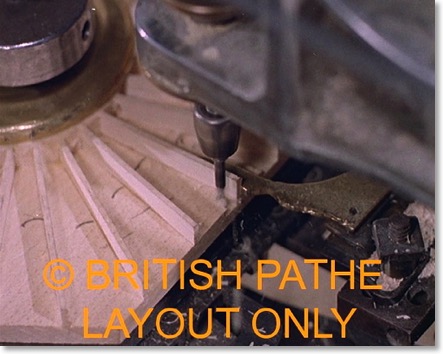The decision to make everything really changes the scene - it means making the bellows, the hex-frames, the reed pans and the Holy of Holies, the reeds.
In order to do all that, a number of tools must be made first: a bellows mould, some sort of router set-up for making the reed pans, another router set-up for making the hex frames, a device to shear of the tongues for the reeds. And the reed frames? How? It’s going to be a long, long list...
Two things pushed me into the decision: one was listening to Geoff Crabb’s bellows making lecture and seeing his bellows mould in High Bradfield in 2009 and the other was seeing - for the first time - the historic movie clip about the Wheatstone factory in the sixties and seeing the reed pan router in action - that was fascinating!
I spent endless hours pondering how that machine worked! At the time (2009), British Pathé (http://www.britishpathe.com) had only very small previews available on their site, though the “View as stills” feature allowed downloading larger images – video frames, generated at 1 fps, with a fat, orange “© BRITISH PATHE LAYOUT ONLY”-water mark in it, often obscuring the most interesting parts of the image:

Still, the images could, in the old and trusty (still is) QuickTime Player 7, be assembled into a movie that was a bit clearer than the preview. And when a concertina.net member pointed out that even the out takes (what you cut away during editing) from the film were available, some of my questions found answers.
These days (2014), British Pathé has made the amazing film collection (90.000 historic clips) available on YouTube - in better quality, and with the water mark gone! So here we are, in the Wheatstone workshop in Islington, 1961:
Next Previous